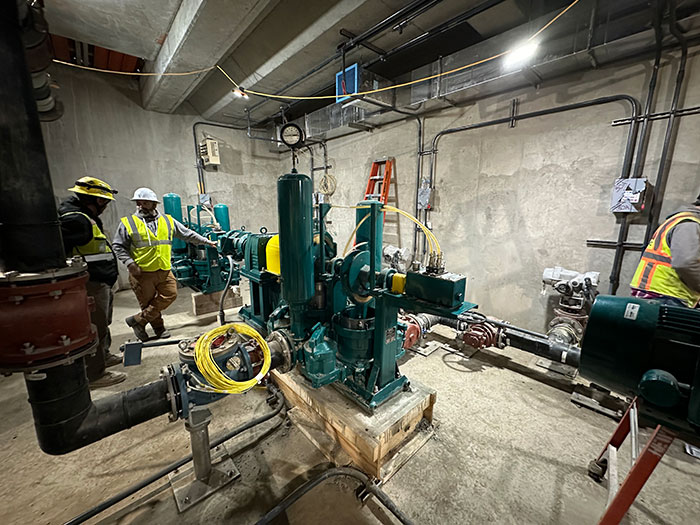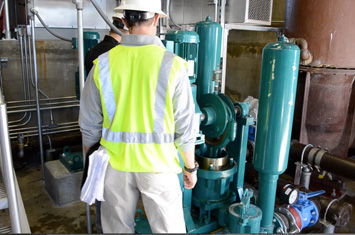When Wastecorp works with consulting engineers and operators on sewage treatment plant improvements, we look to limiting the footprint inside the plant due to the advanced pumping and filtration requirements of the 21st century sewage treatment plant. When upgrading WWTP’s today, engineers typically look for space saving sludge pumps to be connected to a variety of grinders, VFD’s and filter presses to manage the higher percentage of solids that are present in today’s sewage system. An influx of unpredictable weather patterns and the presence of disposable wipes requires the latest plunger style sewage pumps to manage these new realities today.
Wastecorp’s compact sludge pumps are effective for wastewater treatments plants looking for robust raw sewage pumping performance in a small package. Wastecorp recently completed an installation of next generation HPE 1141-SS dual ball valve sludge pumps for a complete sewage treatment plant upgrade in Rhode Island USA. Working with engineering firm CH2M and Jacobs, the facility operators and Wescor Associates, Wastecorp provides installation and training support in addition to the pump equipment.
The specifications called for the Sludge Master sewage pumps to transfer waste activated sludge and septic waste with solids averaging between 1.5% and 5% solids. The average flow rate in this application is 120 GPM with 15-20 ft. of suction head and 15-20 feet of discharge head. The pumps have a 4” connection and are connected to a state-of-the-art control panel and variable frequency drive. This allows the operator to have complete speed control of the pumps.
To manage unpredictable solids handling after storms and the influx of disposable wipes and rags in the sewage system, a grinder was installed before sewage enters the pumps. The Sludge Master Plunger Pumps feed an Ishigaki screw press and water filtration system in the plant. All components in this now advanced sewage treatment facility were installed during the upgrade.
If you’re looking to upgrade your solids handling pumps with a robust compact pumping solution with a proven track record, Go with an ISO 9001 certified municipal and industrial Pump manufacturer. Go with Wastecorp Pumps.
Why the shift from rotary Lobe and Progressive Cavity Pumps to Plunger pumps?
Various pumping technologies like plunger, double disc, rotary lobe, progressive cavity and trash pumps fall in and out of favor with engineers. One manufacturer may promise guarantees against leaks while others tout ease of maintenance etc. The plunger pump is one of those pump technologies that has again become trendy among consulting engineers to specify for sewage pumping. The reasons are varied but the primary reason is the amount of solids the plunger pump can manage on a daily basis. End users have been telling consulting engineers for years that the repair parts costs on lobe pumps and progressive cavity pumps are prohibitive. Those manufacturers typically lure the facility into buying the pump at an initially lower cost only to find out months or years down the road that the true cost of ownership is in fact thousands more than a plunger pump.
Budget Problems at Municipal Waste Water Treatment Plants in USA and Canada
The other reason for the return of popularity for plunger pumps is that municipalities are facing budget constraints in the United States and Canada with a loss of talent due to retirement at many WWTP’s to boot. As many WWTP operators will tell you, the plunger pump lasts forever when properly maintained. The return on investment (ROI) for a plunger pump with a lifecycle of between 20-60 years is an excellent way for a WWTP to modernize their pumps while savings thousands in the longrun. Wastecorp offers expert plunger pump training for operators who have taken over from retirees and we have a free technical support and trouble shooting support system in place to guide new hires. This satisfies the needs of consulting engineers, WWTP plant engineers and operators alike.




